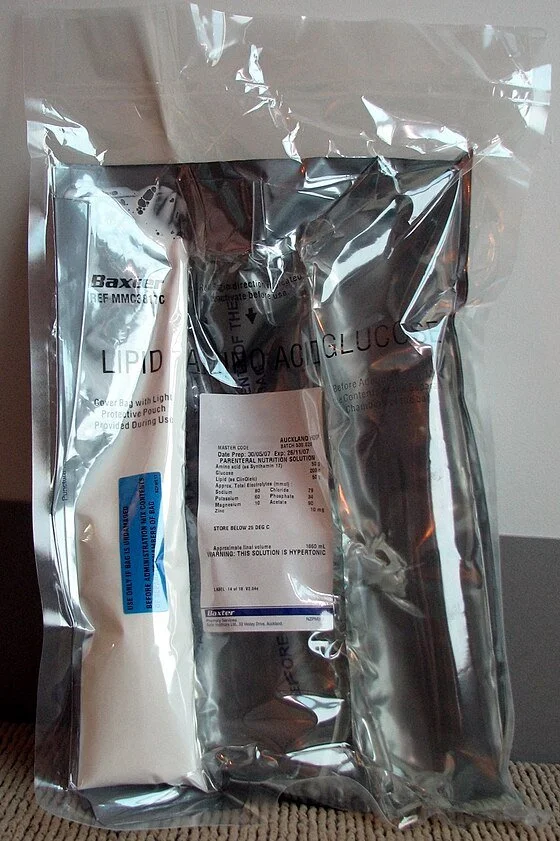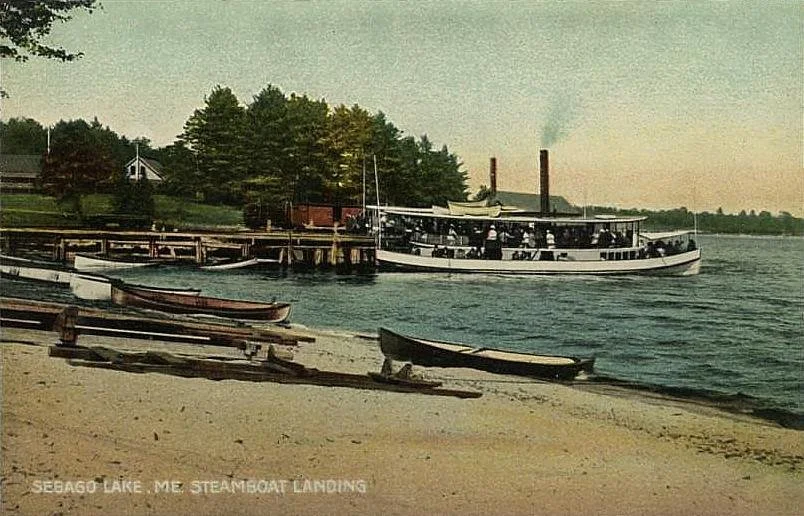
Flesh meets our wired future
“Dream From the Future 2” (oil on canvas), by Alfred DeAngelo, in his show “Something We Imagined,’’ at the Copley Society of Art, Boston, through Nov. 2.
The gallery says that De Angelo looks ‘‘through’’ appearances, and “embodies the essential mysteries of existence through the lens of Surrealism.’’
Jay L. Zagorsky: Americans spend a lot on Halloween while complaining about their finances
— Photo by Anthony22
BOSTON
Halloween was once a time of both tricks and treats. Lately, Halloween has become one big treat for businesses, with consumers spending an estimated US$11.6 billion on this one-night holiday. That’s roughly the same amount of money as Americans spend on children’s books each year.
This massive amount of spending is puzzling, given the media is filled with stories about the economic hardships many families face.
As a business school professor who has written previously about Halloween, I was curious why Halloween spending is just below all-time highs at the same time many people report high levels of economic angst.
The best data on Halloween spending come each year from the National Retail Federation, which surveys Americans about their shopping plans just before the holiday. It found that U.S. consumers will spend over $11 billion this year, which is about half the amount spent annually on dental care for children under age 17.
The most recent survey also shows that about three out of four Americans will celebrate in some fashion. Because not everyone observes the holiday, the federation calculates that the typical person celebrating will spend $104 on Halloween.
Twelve-foot skeletons don’t come cheap. Marvin Joseph/The Washington Post via Getty Images
The federation breaks down spending into four categories. About one-third of spending will be on costumes for children, adults and pets. Another third will be spent on decorations like giant skeletons. About a final third is spent on candy, and the remaining sliver is spent on greeting cards.
Back in 2005, the federation estimated the holiday would generate only $3.3 billion of spending. This means Halloween spending has grown dramatically, by about three and a half times, in just two decades, or about double if we are adjusting for inflation.
What has driven Halloween spending skyward? Some of the growth is due to inflation, which has increased prices by about 65% over the past two decades. Some of the growth is due to more people living in the U.S. In 2005, the U.S. had about 290 million people, while today the figure is closing in on 340 million.
While these two factors explain some of the growth, they don’t explain it all.
To understand more, I looked at some government data:
The U.S. tracks what the typical family spends on a wide variety of products and services to measure the cost of living. Spending each year is monitored via the Consumer Expenditure Survey. This survey has publicly provided data on annual candy spending since 2013, when it found the typical family spent $88 a year on candy.
The latest figures for 2023 show U.S. families have developed a very sweet tooth: Candy spending by the typical family is now at $164, which means candy outlays have almost doubled from a bit over a decade ago.
While this increase in candy consumption undoubtedly boosts spending at Halloween, it also has a downside. The American Dental Association has shown a dramatic increase in spending at the dentist office, as many people make emergency dentist visits as teeth get cracked on candy.
New York City’s Tompkins Square Park Halloween Dog Parade on Oct. 19, 2024. Jamie McCarthy/Getty Images
Spending on costumes has also soared.
In 2005, the best estimate was that $1.2 billion would be spent on just dressing up, while this year the figure is $3.8 billion.
Why so much? Costumes used to be just for children, but today many adults are dressing up. About 1 in 5 adults say they will be wearing a costume for Halloween. Beyond costumes for people, Americans spend millions of dollars on costumes for their pets.
The National Retail Federation has not tracked my favorite Halloween category, pumpkin sales, but the U.S. Department of Agriculture has. When I was young, each family in my neighborhood typically had one pumpkin on their doorstep. Now, I routinely see houses with many – both in my old neighborhood and my new one, which is a few miles away in another part of Boston.
It seems it’s not just my neighbors who are buying more gourds. In 2005, the USDA calculated that there were about four and a half pounds of pumpkins for sale for every person just before the holiday. In 2023, the amount had risen to almost six pounds per person. This means there are about 50% more pumpkins available for carving and for making pies.
While polls suggest many Americans are feeling financially fragile, the data indicates it isn’t having much impact on Halloween spending. After all, over the past two decades, Halloween has become an ever-bigger commercial holiday.
Halloween can be scary, but it doesn’t have to be scary for your finances. If you are struggling financially this year, before buying on credit giant candy bars that only get half-eaten, or cute pet costumes most animals probably don’t want to wear, think about maybe cutting back.
Jay L. Zagorsky is an associate professor of markets, public policy and law at Boston University.
He does not work for, consult, own shares in or receive funding from any company or organization that would benefit from this article, and has disclosed no relevant affiliations beyond their academic appointment.
Beware the disguise
“The fields pulsate yet with the sound of cricket and cicada….{The} ponds lie there misty, warm, seductive. One day camougflaged as summer,fall can easily toss off this disguise and appear as prophet: cold, wet,angry.’’
— Anne Bernays in “Fall’ in New England: The Four Seasons (1980)
Marine matters in metal
“The Discarded” (reclaimed metal and paint), by Boston artist Morris Norvin, in his show “A Plea from the Sea,” at the Nesto Gallery at Milton Academy, Milton,Mass.
The gallery says:
“Norvin ponders the mystery and magic of the world’s oceans with reclaimed metal, for the importance of its health that directly affects us all.’’
Where teachers can live too
From left to right: Westwood First Parish Church, inscription on town clock, Fisher School House, Hale Reservation, Town Hall, and the Old Burial Ground.
— Wikipedia montage
From Robert Whitcomb’s “Digital Diary,” in GoLocal24.com
Affluent towns often battle proposals to change zoning rules to encourage building more housing for low-and-middle-income people. The battle has been quite intense in some Boston suburbs, with Milton perhaps the leader in fighting state mandates aimed at curbing dwelling costs by allowing construction of more multi-family housing, especially near public transportation. The more the supply, the more the rise in costs of owning or renting a place can be slowed.
Some affluent Bay State towns, such as Westwood and Lexington, have supported housing expansion. Their residents realize the benefits of being communities where such essential workers as teachers, police, firefighters, nurses, child-care workers and assorted skilled trades people can afford to live rather than having to face the hassle and expense of commuting in from other towns. Even rich folks need nearby poorer people to serve them.
Healthy communities need an economically mixed population for the long term. For such a mix, we must increase the housing stock. Obviously. And that means accepting more density in some places.
A neighborhood business
In the South End’s old brothel neighborhood.
Some South End lintels in the Ellis and Eight Streets sections of the neighborhood may still bear the signs of their lurid pasts.
In the late 1940s, fed up with johns knocking on their doors in search of prostitutes, residents came to an agreement with the area’s brothels that they would paint their first-floor lintels.
“They had to go to the bordellos and ask them to do it,” said Paul Duffy, longtime neighborhood resident, who was a little boy at the time.
“I think at that time {the paint} might have been red and turned salmon or pink.”
According to Duffy, there are still some buildings that have the mark from the past, but he could not name specific addresses.
Historians reached for more information were not familiar with the paint markings but provided details about South End prostitution half a century earlier.
“[The South End] became very active with brothels between 1890 and 1910,” said Mary Beaudry, chair of Boston University’s Archeology Department. “The johns were just about everybody.”’
‘Suspended in pools’
“XX is not < #13” (photographic giclée print on paper), by Julia Shepley, at Boston Sculptors Gallery.
Her Web site says:
“Her ever evolving iconography of marks and layered surfaces serves to visually translate her experience of light, shadow, and sound as they move through space, and is layered by time and memory. She works on sculpture, drawings, photography, and prints, simultaneously pulling the drawings into three dimensions and creating a graphic image with her wall sculpture and photography. She layers and combines materials, methods and imagery to create the illusion of movement and reassembly. Recent work includes a series of archival pigment photographic prints entitled XX is not < , created with her shadow box sculptures. In her enigmatic photographic images, forms appear to be traveling through - and suspended in - pools of atmospheric illumination and vibrant color.’’
Place for a calm brain?
Chris Evans
“To me, Boston is friends, family, and home… I’ve thought a lot about what ‘home’ means. For me, it’s where my brain stops asking so many questions. You can go to a lot of beautiful places, but even in those places my brain is a very active animal. By no means do I look down on the activity of the mind, but I also think the healthiest thing you can do for yourself is silencing that noise…. If you’re able to take a breath, to be still and be present, that’s living life. That’s bliss. Massachusetts is the place where my brain feels the most calm.”
— Chris Evans (born 1981), Boston-born movie actor. He grew up in the Boston suburb of Sudbury.
Wayside Inn, in Sudbury, Mass. It opened in 1716.
John Phelan photo
Before the weekend places
“The Wide Valley” (oil on canvas), by Paul Sample, at the Art Complex Museum, in Duxbury, Mass.
Paul Sample (1896-1974) was an American artist who portrayed life in New England in the 20th Century with a style that showed elements of "Social Realism and Regionalism." The painting above is almost a Vermont scene.
Atmospheric rivers are moving north
Note the atmospheric river stretching from the Caribbean to the British Isles.
Atmospheric rivers – those long, narrow bands of water vapor in the sky that bring heavy rain and storms to the U.S. West Coast and many other regions – are shifting toward higher latitudes, and that’s changing weather patterns around the world.
The shift is worsening droughts in some regions, intensifying flooding in others, and putting water resources that many communities rely on at risk. When atmospheric rivers reach far northward into the Arctic, they can also melt sea ice, affecting the global climate.
In a new study published in Science Advances, University of California, Santa Barbara, climate scientist Qinghua Ding and I show that atmospheric rivers have shifted about 6 to 10 degrees toward the two poles over the past four decades.
Atmospheric rivers on the move
Atmospheric rivers aren’t just a U.S West Coast thing. They form in many parts of the world and provide over half of the mean annual runoff in these regions, including the U.S. Southeast coasts and West Coast, Southeast Asia, New Zealand, northern Spain, Portugal, the United Kingdom and south-central Chile.
California relies on atmospheric rivers for up to 50% of its yearly rainfall. A series of winter atmospheric rivers there can bring enough rain and snow to end a drought, as parts of the region saw in 2023.
Atmospheric rivers occur all over the world, as this animation of global satellite data from February 2017 shows. NASA/Goddard Space Flight Center Scientific Visualization Studio
While atmospheric rivers share a similar origin – moisture supply from the tropics – atmospheric instability of the jet stream allows them to curve poleward in different ways. No two atmospheric rivers are exactly alike.
What particularly interests climate scientists, including us, is the collective behavior of atmospheric rivers. Atmospheric rivers are commonly seen in the extratropics, a region between the latitudes of 30 and 50 degrees in both hemispheres that includes most of the continental U.S., southern Australia and Chile.
Our study shows that atmospheric rivers have been shifting poleward over the past four decades. In both hemispheres, activity has increased along 50 degrees north and 50 degrees south, while it has decreased along 30 degrees north and 30 degrees south since 1979. In North America, that means more atmospheric rivers drenching British Columbia and Alaska.
A global chain reaction
One main reason for this shift is changes in sea surface temperatures in the eastern tropical Pacific. Since 2000, waters in the eastern tropical Pacific have had a cooling tendency, which affects atmospheric circulation worldwide. This cooling, often associated with La Niña conditions, pushes atmospheric rivers toward the poles.
The poleward movement of atmospheric rivers can be explained as a chain of interconnected processes.
During La Niña conditions, when sea surface temperatures cool in the eastern tropical Pacific, the Walker circulation – giant loops of air that affect precipitation as they rise and fall over different parts of the tropics – strengthens over the western Pacific. This stronger circulation causes the tropical rainfall belt to expand. The expanded tropical rainfall, combined with changes in atmospheric eddy patterns, results in high-pressure anomalies and wind patterns that steer atmospheric rivers farther poleward.
La Niña, with cooler water in the eastern Pacific, fades, and El Niño, with warmer water, starts to form in the tropical Pacific Ocean in 2023. NOAA Climate.gov
Conversely, during El Niño conditions, with warmer sea surface temperatures, the mechanism operates in the opposite direction, shifting atmospheric rivers so they don’t travel as far from the equator.
The shifts raise important questions about how climate models predict future changes in atmospheric rivers. Current models might underestimate natural variability, such as changes in the tropical Pacific, which can significantly affect atmospheric rivers. Understanding this connection can help forecasters make better predictions about future rainfall patterns and water availability.
Why does this poleward shift matter?
A shift in atmospheric rivers can have big effects on local climates.
In the subtropics, where atmospheric rivers are becoming less common, the result could be longer droughts and less water. Many areas, such as California and southern Brazil, depend on atmospheric rivers for rainfall to fill reservoirs and support farming. Without this moisture, these areas could face more water shortages, putting stress on communities, farms and ecosystems.
In higher latitudes, atmospheric rivers moving poleward could lead to more extreme rainfall, flooding and landslides in places such as the U.S. Pacific Northwest, Europe, and even in polar regions.
A satellite image on Feb. 20, 2017, shows an atmospheric river stretching from Hawaii to California, where it brought drenching rain. NASA/Earth Observatory/Jesse Allen
In the Arctic, more atmospheric rivers could speed up sea ice melting, adding to global warming and affecting animals that rely on the ice. An earlier study I was involved in found that the trend in summertime atmospheric river activity may contribute 36% of the increasing trend in summer moisture over the entire Arctic since 1979.
What it means for the future
So far, the shifts we have seen still mainly reflect changes due to natural processes, but human-induced global warming also plays a role. Global warming is expected to increase the overall frequency and intensity of atmospheric rivers because a warmer atmosphere can hold more moisture.
How that might change as the planet continues to warm is less clear. Predicting future changes remains uncertain due largely to the difficulty in predicting the natural swings between El Niño and La Niña, which play an important role in atmospheric river shifts.
As the world gets warmer, atmospheric rivers – and the critical rains they bring – will keep changing course. We need to understand and adapt to these changes so communities can keep thriving in a changing climate.
Zhe Li is a postdoctoral researcher in Earth System Science, University Corporation for Atmospheric Research
Disclosure statement
Zhe Li does not work for, consult, own shares in or receive funding from any company or organization that would benefit from this article, and has disclosed no relevant affiliations beyond their academic appointment.
Low-carbon transport
“Paddling Through’’ (oil on canvas), by Peter Yesis, at Yarmouth (Maine) Frame and Gallery.
Chris Powell: Conn. voters need to mix it up; is racial discrimination okay now?
The film The Land of Steady Habits is set in suburban Connecticut.
MANCHESTER, Conn.
Connecticut got its nickname as "the land of steady habits" in part because of its resistance to political change and its inclination to keep the same people in elective office for a long time. Comments made by Thomas Jefferson about Connecticut politics in 1801 have been aphorized as "few die and none resign."
Now that Connecticut has lost most political competition, with Democrats long having held all major state and federal offices in the state, change seems more unlikely than ever. A television commercial for U.S. Sen. Chris Murphy's campaign for a third term acknowledges this resistance to change even while suggesting it's needed.
The commercial shows the senator on another campaign walk around the state. He says: "What I find on this walk is that the things people care about here in Connecticut really don't change: the cost of living, how much money are they making, how much are they paying in taxes, are their neighborhoods safe?"
Would people keep expressing such concerns if they were satisfied? Or has the cost of living been outpacing wages for many? Have taxes decreased or has inflation made them more burdensome? And when social disintegration makes news in the state every day, how can anyone believe government's claim that crime is down?
Of course, if people's major concerns never change, eventually they might figure out that re-electing officials who never change anything won't help.
But then where are the alternatives in Connecticut? Ken Dixon of the Connecticut Hearst newspapers reports that six of the 36 state Senate elections and 43 of the 151 elections in the state House of Representatives next month are essentially uncontested.
Only one of the six Republican candidates for Congress is well known and will raise enough money for a plausible campaign. It's not enough for candidates to have a message. They also need the means to publicize it.
Meanwhile, the Republican candidate for president is very unpopular in the state and will be of little help to the party's other candidates here.
But any campaign at least starts with a message, and Republican campaigns in Connecticut might do well to take Senator Murphy's inadvertent hint. That is, the cost of living is too high, as is the cost of government, and the social order is coming apart without any acknowledgement by those in charge. Something must be done. But what exactly?
The outgoing administration that the senator supports has worsened the awful trends. Will Connecticut Republicans offer voters more than the opportunity to cast protest votes?
xxx
IS SEGREGATION GOOD NOW?: U.S. Education Secretary Miguel Cardona, the former Connecticut education commissioner and Meriden school superintendent, will be remembered mainly for botching the redesign of the federal college financial aid application, causing a national scandal. Even Democratic members of Congress doubt that Cardona could be considered for reappointment if the party keeps the presidency.
Cardona also spends much time using social media to pander to the teacher unions, one of the Democratic Party's biggest constituencies.
But the other day Cardona said something on social media that might actually be good for Connecticut residents to ponder. He wrote: "The Biden-Harris administration has invested over $17 billion in historically Black colleges and universities, more than any other administration in history. Now that is investing in Black excellence."
Many state residents may remember what they were told by Cardona's colleagues in the state education bureaucracy during the years of litigation in the school integration case of Sheff v. O'Neill: that Black students learn best in a racially integrated environment and that Connecticut's de-facto segregation of Black students should be considered unconstitutional. Now the same big thinkers claim that Black students need other Black students and Black teachers.
So how does racial segregation become "excellence" when, with the federal government's encouragement and financing, Black students enter "historically Black" colleges and universities? After the billions of dollars of expense resulting from the Sheff case and the regional schools it spawned, Connecticut residents might want to know.
Chris Powell has written about Connecticut government and politics for many years (CPowell@cox.net).
Dual personality
“Mirror J” (oil on canvas) by Tigran Tsitoghdzyan, in his show “Filtered Identity, at the Armenian Museum of America, Watertown, Mass., through Feb. 23.
The museum says:
“Tigran is a New York-based artist whose photo-realistic paintings merge an interest in classical and modern art with an emphasis on his own experiences as a father and an immigrant.’’
Arthur Allen: CVS and Helene land double whammy on some patients
Parenteral nutrition bag
From Kaiser Family Foundation Health News (KFF Health News)
The CVS representative popped into Lisa Trumble’s third-floor Berkshire Medical Center hospital room in Pittsfield, Mass., to announce that everything was arranged for Trumble to return home, where she relies on IV nutrition because of severe intestinal problems that leave her unable to eat.
That was on Tuesday, Oct. 8. The next morning a social worker and a doctor woke Trumble to say her discharge was canceled. CVS would no longer provide her home nutrition, and she had to stay in the hospital. “I was dropped between Tuesday night and Wednesday morning with no care for my life or my health,” Trumble said from her hospital bed eight days later.
After this article was published, on Oct. 18, Trumble said she was being discharged, after her caregivers found a replacement service. “I’m just afraid their supplies will run out,” she said. “My backup plan is always to go back to the hospital.”
Trumble is among 25,000 U.S. patients whose survival depends on parenteral nutrition, or PN — IV bags containing life-sustaining amino acids, sugars, fats, vitamins, and electrolytes. Hurricane Helene wrecked a factory in North Carolina that produced 60% of the fluids their sustenance is mixed from. About two weeks later, CVS announced that its Coram division, a leading infusion pharmacy, was exiting the PN and IV antibiotics business.
The hurricane led Baxter International to ration its dwindling supplies. Pharmacies that supply Trumble and other patients like her were already plagued by shortages, and the rationing means the remaining infusion pharmacies can’t take on the customers cut off by CVS, said David Seres, director of medical nutrition at Columbia University Medical Center in New York.
At the Mayo Clinic, in Rochester, Minn., seven or eight patients were ready to go home Tuesday but couldn’t be discharged because no infusion company would accept them, said Manpreet Mundi, a Mayo endocrinologist. The patients would fall ill within a day or two without this nutrition, he said.
By Oct. 18, home supplies had been located for all but a few of them, Mundi said. “A lot of public pressure” on Coram was starting to have an effect, he said.
Although the FDA is allowing emergency imports of IV fluids wiped out by Helene, as well as production of some of the fluids by U.S. compounding pharmacies, it’s unclear how long it will take to replenish supplies, said Mundi, who is a board member of the American Society for Parenteral and Enteral Nutrition and medical adviser to the Oley Foundation, which advocates for PN patients. “We’re trying to raise awareness that this could get worse before it gets better,” he said.
The patients who rely on PN have a variety of conditions that render them unable to digest food. Some have congenital abnormalities or disorders like Crohn’s disease that led to surgical removal of bowel sections. Others were scarred by cancer, car accidents, or gunfire, or are preemies born with underdeveloped intestines. In most patients, the fluid is pumped through a catheter into a large vein near the heart.
A crisis hit this community two years ago when CVS Health announced that it was shutting half of the 71 Coram pharmacies.
CVS, which recently announced nearly 3,000 layoffs amid reports of a possible restructuring, on Oct. 8 began telling its remaining 800 to 1,000 PN customers that they would have to find other infusion pharmacies. A news release provided to KFF Health News suggested the phaseout would last into January, but for patients like Trumble, the impact was immediate.
Highly specialized infusion medicine is “a challenging environment” for all companies “and Coram has not been immune to these challenges,” the CVS release said. “As such, we have reevaluated our service offerings.”
When asked about Trumble’s case, CVS Health spokesperson Mike DeAngelis said the company would “try to resolve it.” The next day, a company called Optum stepped in to replace Coram, Trumble said.
Trumble has relied on IV nutrition for more than a year because of colon cancer and severe intestinal issues. While she has been held at the hospital, she says, she has missed her grandson Jordan Wood, as well as her mother and son, who have helped with her care.(Lisa Trumble)
It’s hard enough normally for such patients to find new suppliers for their materials, which can include 120 pounds of IV fluid per week.
Coram’s departure “made a big crisis that much worse,” Mundi said. “It’s become kind of a double whammy.”
The Baxter International North Cove plant produced most of the country’s high-concentration dextrose, a major source of energy for PN patients, as well as saline solution and sterile water, also vital supplies. A week after Helene hit, Hurricane Milton threatened sterile IV fluid supplier B. Braun Medical’s facility in Daytona Beach, Florida. The federal government helped truck 60 loads of the company’s inventory to a safe location, but the plant was spared the storm’s worst. It restarted production on Oct. 11.
That was a huge relief for Beth Gore, CEO of the Oley Foundation. She, her husband, and their six adopted children braved the storm’s seven hours of lashing wind in their home near Ruskin, Florida. Milton wrecked a car and part of the roof, but the family prayed through it all and somehow never lost power, though their neighbors did, Gore said. That kept the IV fluids fresh and the internet on, which calmed the kids.
Coram has supplied her youngest son, 15-year-old Manny, with PN for 13 years, and the family will need to find another supplier, she said.
“There’s been no relief” since Coram reduced its services in 2022, Gore said. “Now there’s this new twist.”
Her son gets care through Medicaid, whose reimbursement provides barely break-even margins for many infusion pharmacies, she said. Insurance limits, state licensing differences, and highly specific nutritional needs pose challenges for patients seeking new IV suppliers in the best of times, she said.
The FDA announced Oct. 9 that it would allow Baxter to import emergency supplies from Canada, China, Ireland, and the U.K. In the meantime, Baxter is prioritizing hospital patients over the home infusion companies — which lack backup supplies, Mundi said.
“We’re all on the phone 24/7,” said Kathleen Gura, president-elect of the American Society for Parenteral and Enteral Nutrition and pharmacy clinical research program manager at Boston Children’s Hospital. Her team is struggling to find new suppliers of IV nutrition at home for the 20 Coram patients among the 150 she sees.
“Some kids have a situation where they can’t absorb at all through their intestines and will die of dehydration if they can’t get IV,” Gura said.
The IV fluids lost in the Baxter disaster are key to all kinds of inpatient care. Many U.S. hospitals are conserving fluid by giving some patients oral hydration instead of IVs, or by delaying surgeries, said Soumi Saha, senior vice president of government affairs at Premier, which negotiates group hospital purchases.
President Joe Biden has invoked the Defense Production Act, which will enable the government to order companies to prioritize rebuilding the Baxter plant.
The military is flying in supplies from Baxter plants overseas, Saha said. Premier has also asked the FDA to put additional PN ingredients on its shortage list, which would allow large compounding facilities to produce the materials.
Ellie Rogers, 17, of Simpsonville, South Carolina, fears the worst if she can’t get her supplies. She suffers from a host of immunological and neurological ailments that require her to get four liters of IV fluid daily to stay alive, she said.
Her supplier, an Option Care Health pharmacy in South Carolina, informed the family Oct. 14 that instead of her weekly supply it was sending her enough bags for a day or two. “They really don’t know when they’re going to get what they need,” she said. Reducing the infusions in the past has led to dizziness, nausea, and pooling of her blood that “felt like my veins were going to explode.”
On Oct. 7, Crohn’s disease patient Hannah Hale’s infusion pharmacy called and said it couldn’t fill her standing weekly order of IV bags, urging her to find a new pharmacy.
Trumble and her grandson Jordan.(Lisa Trumble)
“I called 14 infusion pharmacies and haven’t been able to find anyone to take me,” said the Dallas 37-year-old. She suffers from weight loss and low blood sugar, and rationing her supplies raises dangers of seizures or coma, she said.
Trumble, 52, who started on PN 13 months ago because of colon cancer and severe intestinal issues, said she was grateful to the hospital and gets excellent care there, but missed her mother, son, and 8-year-old grandson, Jordan — and her cats — during her 17-day hospitalization.
What’s worse, Trumble said, her mother and son, who get Medicaid payments to care for her, weren’t paid while she was away.
But without IV nutrition at home, she said, “I’d starve.”
Arthur Allen is a KFF Health News reporter.
Arthur Allen: aallen@kff.org, @ArthurAllen202
John Adams in a bad mood
An engraved portrait of John Adams as president by the Bureau of Engraving and Printing
Letter from John Adams, founding father and second president to John Taylor on Dec. 17, 1814
Dear Sir
In your fifth page You Say “Mr. Adams calls our Attention to hundreds of wise and virtuous Patricians, mangled and bleeding Victims of popular Fury.” and gravely counts up several Victims of democratic Rage as proofs that Democracy is more pernicious than Monarchy or Aristocracy.” Is this fair, sir? Do you deny any one of my Facts? I do not say that Democracy has been more pernicious, on the whole, and in the long run, than Monarchy or Aristocracy. Democracy has never been and never can be so durable as Aristocracy or Monarchy. But while it lasts it is more bloody than either. I beseech you, Sir to recollect, the time when my three Volumes of “Defence” were written and printed, in 1786, 1787 and 1788. The History of the University, had not then furnished me with a document I have Since Seen; an Alphabetical Dictionary of the Names and Qualities of Persons “mangled and bleeding Victims of democratic rage and popular fury” in France during the Despotism of Democracy in that Country, which Napoleon ought to be immortalised for calling “Ideology.” This Work is in two printed Volumes in octavo as large as Johnson’s Dictionary and is in the Library of our late virtuous and excellent Vice President Elbridge Gerry where I hope it will be preserved with anxious care. An Edition of it ought to be printed in America. otherwise it will be forever supressed, France will never dare to look at it. The Democrats themselves could not bear the Sight of it. They prohibited it and suppressed it as far as they could. It contains an immense number of as great and good Men as France every produced. We curse the Inquisition, and the Jesuits and yet the Inquisition and the Jesuits are restored. We curse religiously the Memory of Mary for burning good Men in Smithfield, when if England had the been democratical She would have burned many more, and We murder many more by the Guilotine, in the latter Years of the Eighteenth Century. We curse Guy Faulks for thinking of blowing Up Westminster Hall, Yet Ross blows up the Capitol, the Palace and the Library at Washington and would have done it With the same sang froid had Congress and the Presidents Family been within the Walls. Oh! my soul! I am weary of these dismal Contemplations! When will Mankind listen to reason, to nature or to Revelation?
You Say I “might have exhibited millions of Plebians, sacrificed to the pride Folly and Ambition of Monarchy and Aristocracy.” This is very true. And I might hav[, Start insertion,e, End,] exhibited as many millions of Plebians sacrificed by the Pride Folly and Ambition of their fellow Plebians and their own, in proportion to the extent and duration of their power. Remember Democracy never lasts long. It soon wastes exhausts and murders itself. There never was a Democracy Yet, that did not commit suicide. It is in vain to Say that Democracy is less vain, less proud, less selfish, less ambitious or less avaricious than Aristocracy or Monarchy. It is not true in Fact and no where appears in history. Those Passions are the same in all Men under all forms of Simple Government, and when unchecked, produce the same Effects of Fraud Violence and Cruelty. When clear Prospects are opened before Vanity, Pride, Avarice or Ambition, for their easy gratification, it is hard for the most considerate Phylosophers and the most conscientious Moralists to resist the temptation. Individuals have conquered themselves, Nations and large Bodies of Men, never.
When Solons Ballanc was destroyed, by Aristides, and the Preponderance given to the Multitude for which he was rewarded with the Title of Just when he ought to have been punished with the Ostracism; the Athenians grew more and more Warlike in proportion as the Commonwealth became more democratic. I need not enumerate to you, the foolish Wars into which the People forced their wisest Men and ablest Generals against their own Judgments, by which the State was finally ruined, and Phillip and Alexander, became their Masters.
In proportion as the Ballance, imperfect and unskillfull as it was originally here as in Athens, inclined more and more to the Dominatio Plebis; the Carthaginians became more and more restless, impatient enterprising, ambitious avaricious and rash; till Hanibal swore eternal <, Start deletion,Enmity, End,> Hostility to the Romans, and the Romans were compelled to pronounce Delenda est Carthago.
What can I Say of The Democracy of France? I dare not write what I think and what I know. Were Brissot, Condorcet, Danton Robespiere and Monsiegnieur Equality less ambitious than Cæsar, Alexander or Napoleon? Were Dumourier, Pichegru, Moreau, less Generals, less Conquerors, or in the End less fortunate than he was.? What was the Ambition of this Democracy.? Nothing less than to propagate itself, it is Principles its System through the World, to decapitate all the Kings, destroy all the Nobles and Priests in Europe? And who were the Instruments employed by the Mountebanks behind the Scene, to accomplish these Sublime purposes? The Fisherwomen, the Badauds, the Stage Players, the Atheists, the Deists, the Scribblers for any cause at three Livres a day, the Jews, and, Oh! that I could erace from my memory! the learned Divines profound students in the Prophecies. Real Philosophers, and Sincere Christians in amazing Numbers over all Europe and America were hurried away by the torrent of contagious Enthusiasm. Democracy is chargeable with all the blood that has been spilled for five and twenty years. Napoleon and all his Generals were but Creatures of Democracy as really as Rienzi Theodore, Mazzianello, Jack Cade or Wat Tyler. This democratical, Hurricane, Inundation, Earthquake, Pestilence call it which you will, at last arroused and alarmed all the World and produced a Combination unexampled, to prevent its further Progress.
John Adams birthplace in Quincy, Mass,
John Adams
Stock up now for winter
Newspaper advertising insert from the 1960’s. Raymond's was a Massachusetts department store chain, with origins in the 1870s . It was closed in 1972. The main store was at Washington Street and Franklin Street in downtown Boston. It was New England’s quintessential downmarket chain. Its mascot was the parody of an old Yankee, Unkle Eph (upper left corner).
We are?
“We All Love I” (oil on wood), by Massachusetts artist Youngsheen A. Jhe, at Galatea Fine Art, Boston, Oct. 31-Nov. 30.
She says:
“We are all love. Although each person’s life seems to be following an individual trajectory, in reality they are all part of one big story. We are all connected by an invisible thread, not only those I know, but even those I am not directly connected to. At the center of that connection is the essence of love. No one is alone.’’
Lake life
1910 postcard. Sebago has been a summer resort area since the Civil War.
Our friends' house along part of Sebago Lake, with now lawn.
We drove up to the Sebago Lake complex, northwest of Portland, Maine, last week, to see some friends there. They’re based in Los Angeles but have built a house on Sebago. It’s mostly for summer, but they use it from time to time in other seasons, too. They love Maine, with its woods, fabled coast and lakes, in part because it’s so different from dry Southern California, whose many fires have distressed them.
The area around their Maine place is becoming increasingly eco-friendly; I suspect that may be driven in part by the wave of affluent newcomers, which got higher in the pandemic as people fled big cities. That disaster led some summer and weekend residents to move to Maine full time. But most native Mainers, including poor ones, also seek to protect The Pine Tree State’s environment. There’s plenty of poverty in Maine, and most of the wealth is along the coast from Kittery to Acadia National Park.
To protect their gorgeous setting and its resources requires taking away some freedoms. A local rule applying to our friends’ immediate area bans new lawns along the water; old ones are grandfathered in. The rule is meant to curb pollution from the fertilizers, herbicides and pesticides that many property owners dump on their lawns to keep them looking like a swatch of golf course and that end up in the lake. The rule also, of course, helps curb shoreline erosion, which is less from woods than lawns.
An important factor in rules about Sebago is that it’s the main source of Portland’s water.
Instead, people such as our friends have shrubs and other low vegetation, say two or three feet high, between their house and the water. This has a nice effect as you look at the shining water from their big windows.
As for the freedom to put a lawn next to the lake: Surely locals should also have the freedom of being able to use a clean lake. It reminds me of the MAGA battles against having to wear a face mask to reduce COVID spread in crowded places. How about the freedom to go around without fear that an infected person in a pandemic will get you very sick?
Then there’s the grossly misinterpreted (and badly written ) state-militia-promoting Second Amendment, which MAGA types wielding military-style assault rifles say is essential for their freedom to defend themselves.
How about the freedom to be in public places, including schools, without the fear of being gunned down by yet another young man with a weapon designed to mow down people by the dozens, not just a lone criminal or lunatic.
One person’s “freedom’’ is another’s captivity. There will always be battles.
xxx
Besides such joys as the beauty of the fall foliage, which was heading into its height up there, and the sun glimmering on the lake, our visit gave me a greater appreciation of the beauty of granite – the quintessential stone of the region. On our friends’ property we saw granite boulders, left by the last Ice Age and the bane of old Yankee farmers, artfully used in landscaping, and the effects achieved by the use of granite for steps, terraces and indoor work, such as countertops and even benches at the side of fireplaces.
Our friends told us about the Orland, Maine, company called Fresh Water Stone that created exquisite granite work for them, such as the terrace in this picture. (I have no commercial, or other connection with the company.)
Stonework is just one example of why the state is renown for its artisans. Consider the long tradition of its boatbuilders, furniture and tool makers, painters, sculptors, ceramists, leather-goods designers, and so on.
Meanwhile, I read about arguments in Maine, as elsewhere, about farmers selling off or leasing land for solar farms. Each local case is different, of course, but it seems to me that reducing local agricultural production can undermine the battle against global warming since it means that more food must be shipped from far away, thus burning more fossil fuel. Can’t many more roofs and abandoned lots be venues for solar panels instead of putting them on farmland or chopping down trees, those crucial carbon-dioxide absorbers?
I’ve noticed a paradox up there: Some of those who don’t like the famously long winters at the same time worry that they’re getting too short and warm, ruining such local activities as ice fishing and allowing in invasive animals and plants from the south.

























